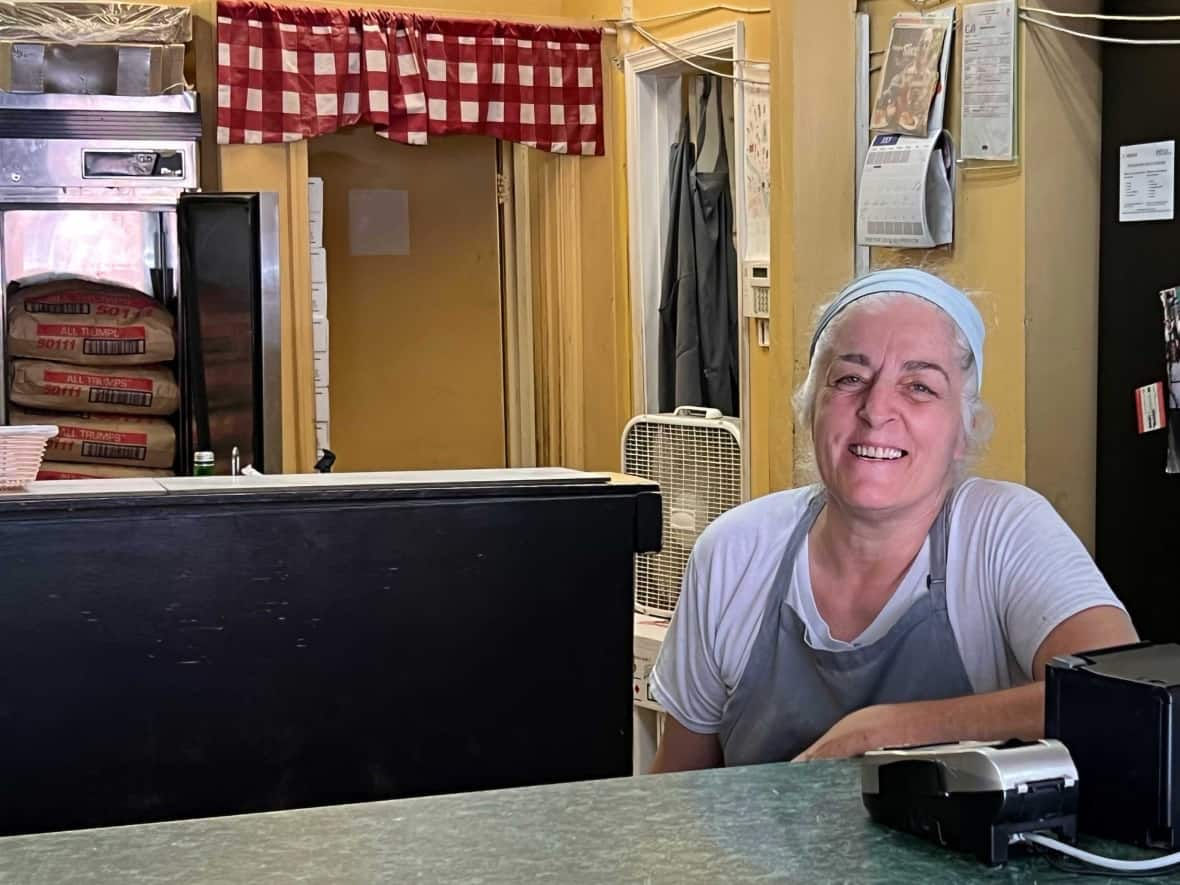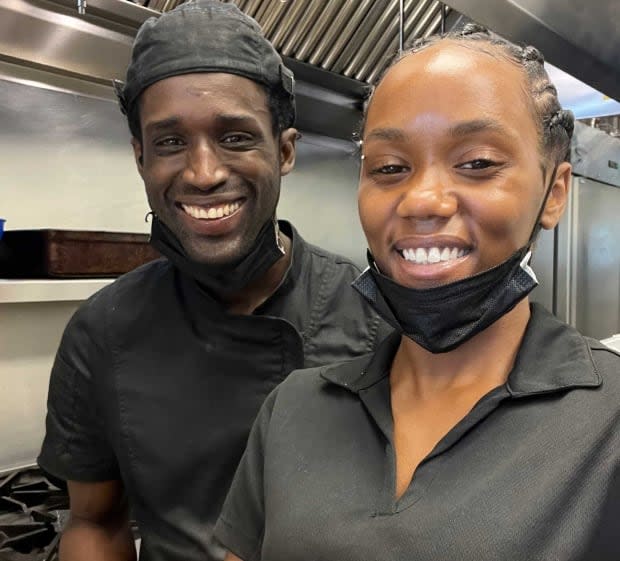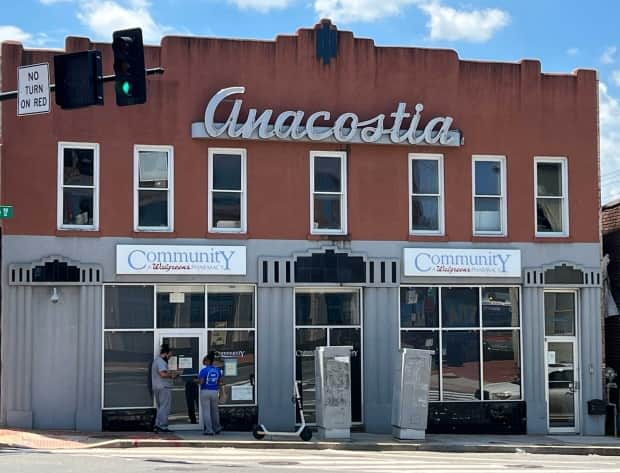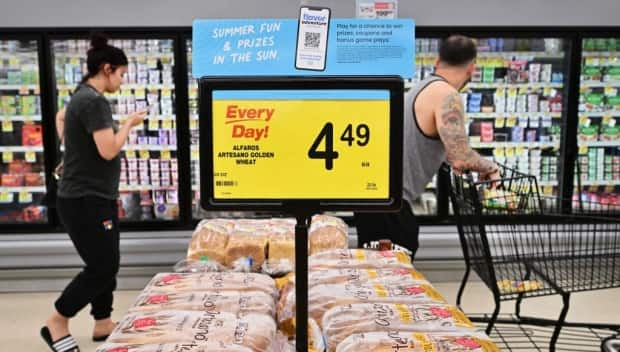Eye-popping price increases for staples like milk and eggs leave some in the U.S. with few options

To get a sense of what a 40-year-high inflation rate looks like south of the border, stroll down Martin Luther King Jr. Avenue in D.C.'s historic Anacostia neighbourhood and ask the locals about the price of groceries.
From bread to milk to a pack of chicken wings, most can rattle off the recent price fluctuations down to the penny.
"It used to be like $125 US, and now, it's $170," Benito Co, 34, said of the cost of a 40-pound case of chicken wings he used to buy for his small eatery, 6Co. "I'm, like, this is crazy. I'm just not selling [them] for now."
The price of chicken has risen 19 per cent in the past year, according to the latest U.S. consumer price index, which tracks prices for tens of thousands of goods and services.
It's just one of the eye-popping price increases that pushed the overall inflation rate in the U.S. to 9.1 per cent last month, one percentage point higher than Canada's. In an average year, prior to the pandemic, inflation was closer to two per cent.

For Americans, like Canadians, it's been most noticeable at the gas pump, where prices have gone up a whopping 60 per cent since last June. But the jump in the cost of staples such as milk (16 per cent), butter (26 per cent), eggs (33 per cent) and flour (19 per cent) is also hitting consumers and small businesses hard.
Fatma Nayir, 61, runs Mama's Pizza Kitchen down the street from Co's eatery and is paying $26.99 for the 50-pound bag of flour that used to cost $18.
"Ground beef, flour, every single item that I use [has gone up]," she said.

From eggs to pizza boxes
Price increases have been compounded by supply shortages that started in the COVID-19 pandemic and continue to plague businesses. When the cardboard pizza boxes essential to her business began getting expensive and hard to find, Nayir debated using trays. Plastic forks that used to be out front for customers are now given out sparingly from behind the counter.
Two months ago, facing a rise in D.C.'s minimum wage that kicked in July 1, she finally upped her prices 10 per cent. It's not a move she made lightly in an area where 60 per cent of residents earn less than $50,000 a year and median household income is $37,963.
How much more are Americans paying for essential goods and services?
"It's really across the board, from top to bottom," Laila Winborne, 35, said of the impact of inflation as she waited to pick up a pizza.
The married mother of three works at Nationals Park stadium. The cutting back on family outings and other extras that many people find they're having to do has meant fewer ballpark visitors and fewer shifts for Winborne.
At home, Winborne struggles to maintain her own already costly vegan diet and stretch her family's grocery budget. A carton of 60 eggs to feed her family members who aren't vegan used to cost about $10 at the local Safeway, she said, but is now closer to $19.
"At least if I go to Walmart, it's $9, but because it's Walmart, they're always out of stock," she said. "People who didn't used to shop there, now, they're shopping at these lower [priced stores]. It's like, come on, this is our store!"

Fuel costs, wages driving up prices
So what's driving the increase? Economists say it's a combination of factors, including:
Fuel and energy costs, exacerbated by the Russian invasion of Ukraine. These factor into everything from fertilizer on the farm to refrigeration at the store and the transport in between.
Post-pandemic labour shortages that have pushed up wages, which account for about half of the price we pay at the grocery store, according to Christopher Barrett, an agricultural economist at Cornell University in Ithaca, N.Y.
Pandemic-related costs, such as reorienting supply chains and coping with ongoing outbreaks.
Expansion of the money supply through initiatives such as COVID-19 stimulus programs and the actions of the Federal Reserve.
"Farmers are not getting a windfall out of high farm prices this year," said Roger Cryan, chief economist at the American Farm Bureau Federation, which lobbies on behalf of the agriculture industry.
"After they've covered their transportation, their shipping costs and their marketing costs, they get about eight cents out of the retail dollar to cover their on-farm costs."

The less processed a food item, the higher their share, he said. A bottle of milk, for example, can return about half the retail price to the farmer.
The pandemic put a lot of demand on a limited supply as people stopped eating out and bought more groceries, and that raised the overall cost of food production, Cryan said.
"If demand grows rapidly, it can be very tough to keep up."
Food prices rise fast, fall slowly
Profit-driven markups are also likely a component in the price increases, said Barrett, given the extent of market concentration in the food and grocery sectors.
"There are underlying cost pressures in the economy that contribute to part of the inflation, but firms with market power see that as an opportunity to boost their profits yet more on the backs of consumers."

There is relief in sight, however, both Barrett and Cryan said. Gas prices have started to come down, averaging about $4.55 a gallon ($1.56 Cdn a litre) Saturday compared to more than $5 last month, and President Joe Biden said his talks with oil-producing nations this week should eventually release more supply.
Unfortunately for consumers, food prices retreat more slowly than they rise, Barrett said.
"Food price traders often comment that prices go up like a rocket and fall like a feather."
'The cost of gas is killing us'
Meanwhile, ordinary Americans are saving where they can, cutting back on non-essential goods, such as new clothes and snacks, buying less meat and using cost-saving apps.
Heavy-machine operators Charles Starling, 37, and Howard Fells, 31, are trying to keep driving to a minimum. Family vacations and weekend getaways are off the table for now, they said while taking a break from installing a storm drain.

"The cost of gas is killing us," said Starling, who lives in Laurel, Md., but works in D.C. "I've got to travel at least 26 to 27 miles [about 42 to 43 km] a day."
Others are getting creative in their belt-tightening.
Chanel Williams, 35, is a single mother of a two-year-old and a 15-year-old. She's doing more gardening and trying to reduce food waste by canning.
"The things that are in my garden, like string beans, that would go bad, I can pickle them," she said. "With cabbage, I've been making kimchi."
Williams is a homeowner, works as a janitor for the city's subway, and owns her own hazmat and decontamination business. But she still has to come to a local food bank for essentials such as diapers and to meet all her family's food needs.

"I've been relying a lot on grains and legumes, dry food," she said. "I have been breaking down portions of food and freezing meticulously."
Most of the discussion of how the government can help Americans weather inflation have focused on reducing tariffs on imports from China and gas-tax holidays. But Barrett said Williams's solutions are more in line with what governments should be doing.
Climate change has cut into agricultural productivity around the world, and if food supply is to keep pace with growing demand, we need to do better at recovering food waste, ramping up production of plant-based proteins and lab-grown meat, and expanding controlled-environment agriculture such as hydroponic and vertical farming, he said.
"They need to be doubling down on investment in R&D to produce more food using less water, less chemicals, closer to where people live and more cheaply."
WATCH | Biden hopes Mideast visit will impact gas prices:


